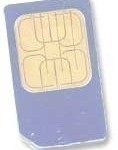CNA stands for Customer Name and Address. The CNA number is a phone number for telephone company personnel to call and get the name and address for a phone number. If a telephone lineman finds a phone line he does not recognize, he can use the ANAC Number to find its phone number and then call the CNA operator to see who owns it and where they live. Commercial CNA Number Services Normal CNA numbers are available only to telephone company personnel. Private citizens may legally get CNA information from Read More
Teleconference Bridge
A teleconference bridge is the equipment which is used for allowing three or more people to communicate with each other at the same time. It is used for establishing conferences on phone as it allows a number of people to communicate with each other at the same time. A teleconference bridge connects multiple incoming lines so as to have a number of people connected together, and so, it's used for establishing video-conferences, audio conferences and also for conducting meetings and seminars. In order to establish a conference call, a person Read More
Call Forwarding
Call forwarding lets consumers redirect calls coming in on their phone line to another phone line. Most telephone providers allow their clients to use *72 or *73 to set up call forwarding on their home or mobile phones. Some phone companies also allow users to set up this feature without using the phone line whose calls will be forwarded. Individuals who travel frequently or work at multiple locations throughout the day/week find this feature useful. The cost of the service depends on the individual's phone plan and service provider. How Read More
Pay as You Go Cell Phones
Sometimes called pre paid or prepay cell phone plans, Pay as You Go Cell Phones are usually used in specific types of mobile phone calling plans. Unlike standard mobile phone calling plans that charge a set monthly fee for a specific amount of calls, pay as you go cell phone calling plans only require the consumer to purchase calling minutes when they would like to make a call. Getting Started with a Pay As You Go Cell Phone Calling Plan It is important to note that in order to join Read More
SIM Card

A SIM (Subscriber Identity Module) card is a type of interface card that is found in most modern cell phones and contains the user’s account information as well as some types of media, such as contacts, pictures, and sometimes ringtones. A SIM card contains an ICCID, or Integrated Circuit Card ID, number that identifies the SIM card to the network, an IMSI, or International Mobile Subscriber Identity, number that identifies the person who is associated with the SIM card, cryptographic information for security purposes, temporary information concerning the local network Read More
SCM: Station Class Mark
The SCM (Station Class Mark) is a 4 bit number which holds three different pieces of information. Your cellular telephone transmits this information (and more) to the cell tower. Bit 1 of the SCM tells the cell tower whether your cellphone uses the older 666 channel cellular system, or the newer 832 channel cellular system. The expansion to 832 channels occured in 1988. Bit 2 tells the cellular system whether your cellular telephone is a mobile unit or a voice activated cellular telephone. Bit's 3 and 4 tell the cell Read More
TL1 (Transaction Language 1)
TL1 (Transaction Language 1) is an element management protocol used primarily in the telecommunications industry. TL1 was designed by Bellcore (now Telecordia) in 1984 for use with its OSS (Operations Support System), NMA. TL1 is an MML (Man Machine Language), which means that TL1 messages should be readable and writeable by humans as well as machines. TL1 provides a CLI (Command Line Interface) to enable a user to a control a Network Elements (NE’s). TL1 also provides Network Elements with the capability of sending events to an OSS or Enterprise Read More
How Do I Connect My Bluetooth to My Cell Phone?
Before any connection can be made between the Bluetooth and the cell phone, it is important that they both have a strong charge. Typically when these devices begin to run extremely low on battery, the signal they emit is not as strong and that can result in a failed attempt at configuring a Bluetooth to the cell phone. However, should the battery be charged completely, it'll take no more than five minutes to connect. How to Connect a Bluetooth to a Cell Phone Put the device into pairing mode. To Read More
Call Center Software
A Call Center Software is generally an end-to-end software solution for customer support, service and satisfaction. Such software are used by enterprises and companies to provide quality assistance to their customers. It also helps automate the entire call center process, in turn improving speed, quality, performance and productivity. Call Centers are broadly classified as Inbound and Outbound. Inbound Call Centers receive calls and support tickets from customers and are focused on servicing. Outbound Call Centers make calls to potential and existing customers and are focused on marketing and sales. Both, Read More
Telephone Tone Frequencies
The Low Tone is a generic tone used with various interruption patterns for the specific tones listed below: Line Busy Tone Reorder Reverting Tone No Circuit Tone No Such Number Vacant Code Group Busy Tone Deposit Coin Tone Vacant Position Tone Dial Off-Normal Tone Trouble Tone Dial Jack Tone Dial Test Signal Class of Service Low Tone is 480 Hz and 620 Hz at -24 dBm0/frequency. On some systems manufactured before 1974, Low Tone was 600 Hz modulated at 120, 133, 140, or 160 Hz at 61 – 71 dBrnC. Read More


Share on: